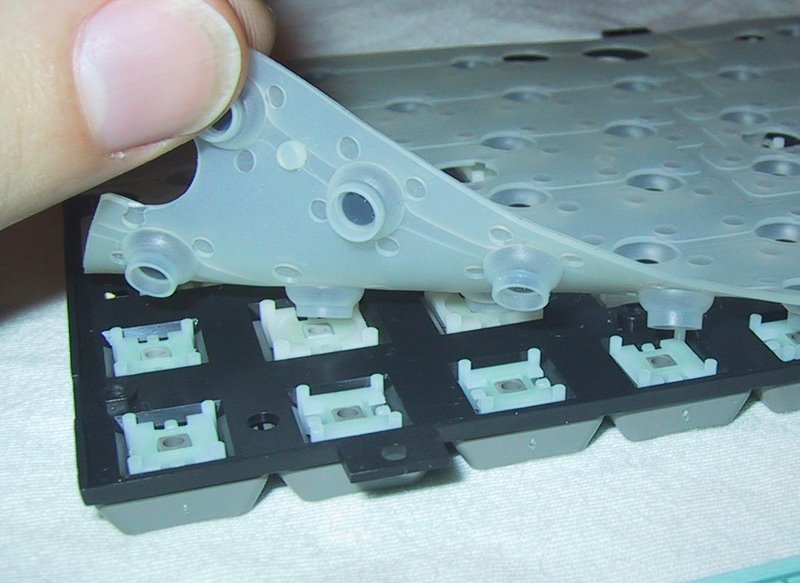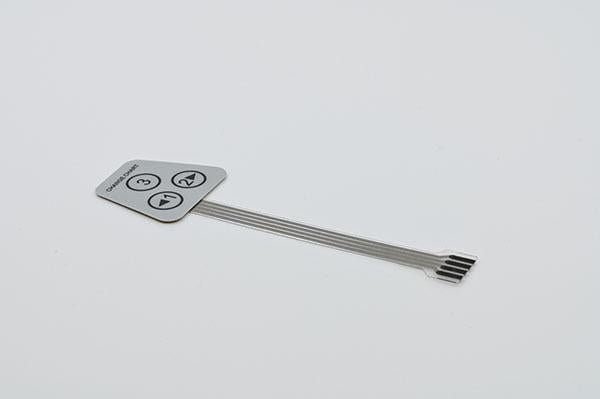Understanding the Functionality of Membrane Layer Switches for Individual Interface Instruments
The functionality of membrane layer switches stands for a considerable innovation in customer interface style, integrating efficiency with visual convenience. As sectors significantly focus on individual experience, recognizing the nuances of membrane layer button technology becomes vital.
What Are Membrane Switches?
Membrane layer buttons are innovative interface devices that promote user interaction with digital tools. These versatile elements are composed of numerous layers, including a graphic overlay, spacer, and a printed circuit layer. The design permits a seamless integration right into numerous electronic tools, improving both the visual and functional aspects of customer interfaces.
Membrane layer switches are commonly utilized in a large range of applications, from house home appliances to commercial equipment and clinical devices. Their building generally features a slim profile, making them a perfect selection for portable designs. The responsive comments supplied by these switches can be crafted to satisfy details customer choices, making certain effective communication between the individual and the tool.
Longevity is an additional substantial benefit of membrane layer buttons, as they are immune to dust, dampness, and chemicals, which improves their lifespan sought after atmospheres. Furthermore, these switches can be customized in regards to form, size, and visuals design, allowing for branding and user-specific features. Overall, membrane switches stand for a sensible service for boosting customer experience in digital devices, incorporating functionality with aesthetic appeal in an efficient way.
Exactly How Membrane Switches Over Work
Operating on an uncomplicated concept, membrane layer switches use a layered construction to register user input efficiently. Each switch contains multiple layers, consisting of a printed circuit layer, a spacer layer, and a top visuals layer, which are created to collaborate perfectly. When an individual presses the leading layer, it presses the spacer layer, bringing the conductive aspects of the circuit layer right into contact with each various other.
This contact creates a shut circuit, signaling the gadget to execute a particular function. The style permits numerous setups, including responsive comments, which can enhance the customer experience by providing a physical feeling upon activation. The materials used in membrane layer switches commonly consist of flexible substrates, such as polyester or polycarbonate, which make certain durability and durability versus deterioration.

Secret Advantages of Membrane Buttons

An additional significant benefit is their density. Membrane layer buttons are slim and light-weight, which enables suppliers to save room in their gadgets without compromising performance. This attribute is specifically advantageous in applications where weight and volume are crucial considerations.
Additionally, membrane layer switches are resistant to dirt, dampness, and chemicals, improving their resilience. This durability expands their life expectancy and minimizes the requirement for constant replacements, resulting in expense savings with time.
Furthermore, the tactile feedback provided by membrane layer switches can be enhanced to improve user interaction. They can include attributes such as elevated switches or audible look at this site clicks, improving usability and user experience.
Applications Throughout Industries
Customer user interface tools utilizing membrane layer switches are common in a large selection of sectors, showcasing their versatility and functionality. Membrane Switch. In the medical field, membrane buttons are indispensable to gadgets such as diagnostic equipment and patient monitoring systems, where their longevity and ease of cleaning are crucial for maintaining hygiene requirements. Similarly, in the automotive sector, these buttons are used in control panel controls and infomercial systems, giving a sleek and modern interface for customers.
Additionally, the customer electronics sector gain from membrane switches in devices and handheld gadgets, where portable design and easy to use user interfaces enhance individual experience. Industrial applications likewise leverage membrane switches for control panels in machinery and automation systems, emphasizing their toughness and resistance to extreme settings.
In the aerospace and protection sectors, membrane layer buttons are used in cockpit controls and tools, where index reliability and efficiency under severe problems are critical. Additionally, the gaming sector significantly includes membrane layer switches in controllers and gallery makers, adding to an appealing user experience. In general, the adaptability of membrane switches over allows their extensive usage throughout various markets, highlighting their importance in modern-day individual interface style.
Future Patterns in Membrane Layer Switch Over Technology

Additionally, making use of innovative products, such as polycarbonate and polyester films, is anticipated to original site increase, giving improved longevity and resistance to environmental stress factors. These products contribute to the general durability of membrane switches, making them ideal for harsher industrial applications.
Furthermore, the incorporation of smart innovation, including IoT connectivity, will make it possible for membrane switches to connect with various other gadgets and systems, promoting a much more interactive user experience. This trend straightens with the growing demand for wise gadgets throughout numerous industries, from health care to consumer electronics.
Lastly, personalization choices are expected to increase, permitting manufacturers to create bespoke options tailored to particular individual needs and preferences. These advancements will place membrane switches as necessary parts in the development of customer interface innovation.
Final Thought
In verdict, membrane layer changes stand for a crucial development in customer interface modern technology, using a trustworthy and versatile option for diverse electronic applications. As innovations in material scientific research and touch noticing technologies proceed, the functionality and applicability of membrane layer buttons are anticipated to increase, strengthening their importance in contemporary electronic tools.